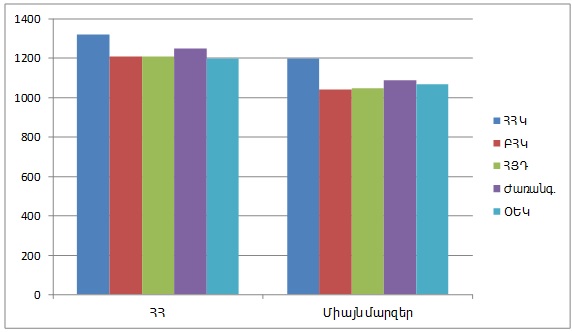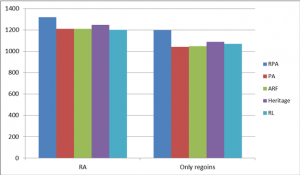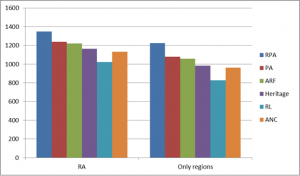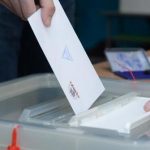- 26 February, 2016
- Elections

Central Electoral Commission Has “Painted” Electronic Lottery Results
As we know, the Armenian authorities intend to introduce elements of electronic voting with the new Election Code in order to raise the level of public trust towards elections.
Nevertheless, some election functions have already become electronic according to the current Election Code adopted in 2011. Thus, the “Union of Informed Citizens” has tried to reveal whether those functions have become just and transparent and to what extent.
In particular, the matter in question is the electronic lottery that determines the distribution of the positions of heads of precinct election commissions among political parties. The point is that each parliamentary party receives quota for heads of precinct election commissions in direct proportion with the number of deputies it has in the National Assembly. And the e-lottery determines the distribution of precincts among the parliamentary parties.
But the point is that precincts (polling stations) have different numbers of voters in their lists, and include from only a few to as many as 2000 voters. Hence, “getting” a big precinct is a matter of luck… Well, at least, it should ideally be a matter of luck.
The logic of elementary arithmetic suggests that all the parliamentary parties should have headed polling stations with an approximately same number of voters (around 1260) as a result of distribution of positions of heads of more than 2000 polling stations. But the results of the “e-lottery” are different.
2012 Parliamentary Elections
So, in the 2012 National Assembly elections, the Republican Party of Armenia had been allocated the precincts that had an average number of 1320 voters, while the other parties had precincts with the average number of 1200 to 1248 voters.
This means that the other parties had quite close figures, while the Republican Party of Armenia led the list with precincts with the average of 100 more voters compared to other precincts.
Moreover, this difference is even more striking in the regional constituencies, where the spectrum of the size of precincts is larger. In the regions, the Republican Party gets precincts with 1198 voters on average. Meanwhile, the other parties head precincts with an average number of 1042-1088 voters, i.e. less than the number in precincts headed by the Republican Party by as much as 140.
2013 Presidential Elections
The Republican Party of Armenia was even more “lucky” in the 2013 presidential elections, when it got precincts with an average number of 1350 voters each, whereas the Heritage Party got precincts with an average number of 1163 voters. This means that RPA led precincts with an average of 187 more voters compared to that of the Heritage Party.
And once again the difference in the regional constituencies was much more significant (RPA- 1226, Heritage Party- 985, the difference- 241).
2015 Referendum
It is worth mentioning that the same phenomenon was not observed in the 2015 constitutional amendments referendum, and all the parliamentary parties got positions of heads of precinct electoral commissions with a very close average number of voters. Particularly, the mean range was 1226 to 1298. And the average size of precincts headed by RPA was quite trustworthy (1258 voters).
The aforementioned figures testify that the Central Electoral Commission did not make any such fabrication in 2015 and a real lottery took place. But at the same time, this emphasizes the abnormality of results of similar lotteries in 2012 and 2013 elections.
Can We Still Talk about Trust?
The allocation of positions of heads of precinct election commissions by Central Electoral Commission in 2012 and 2013 may have theoretically been explained by coincidence and Republicans being extremely lucky.
However, both the scale of difference and repetition of the phenomenon in two successive national elections come to prove that the CEC probably made some changes in the “Elections-2” program implementing the e-lottery. Hence, the latter was guided by some principle that was beneficial for the Republican Party. Such a fabrication would have been impossible if the lottery had followed the “good old” method (for instance, as in lottery games) without the use of electronic systems.
In any case, it is a fact that the e-lottery program in 2012 and 2013 yielded a desired result for the ruling party, and, therefore, it cannot be credible.
Moreover, this comes to prove that the introduction of electronic systems in election processes cannot increase public trust towards these processes. As the electronic system in charge of the lottery has yielded fabricated results, each electronic system implementing another electoral function can be forged too.
“Union of Informed Citizens”


 Հայ
Հայ Рус
Рус




